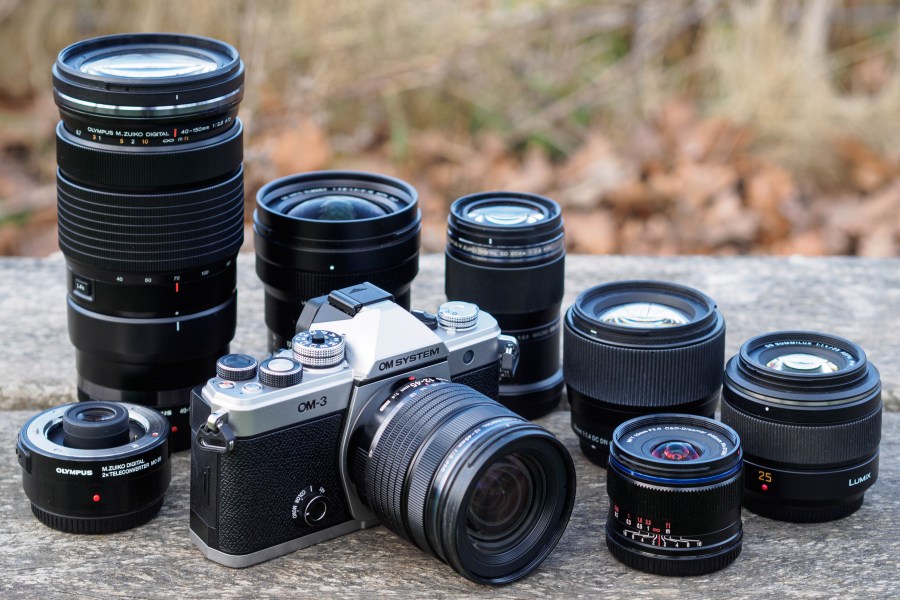There are many articles online declaring that the DSLR is dead, or that Olympus has fallen [sic], or even that Micro Four Thirds is dead, especially if someone believes that Full-frame is the answer (and the only way!). In fact, if you read internet forums or Facebook comments, then you’ll probably hear that nobody uses Micro Four Thirds anymore, having all now switched to full-frame. (Visit a Micro Four Thirds group, and you’ll see hundreds of photos showing the opposite is true).
Jimmy Cheng (RED35) has posted a video on YouTube discussing this, with a video titled ‘Micro Four Thirds is … DEAD (Internet)’ and has inspired this article you’re reading now. People have been saying on internet forums that Olympus (and others) are dead, FOR YEARS, long before Olympus split off the imaging division, and a new OMDS/OM System was set up to continue the imaging business. People have been saying Pentax is dead for many years, and they still keep going, selling cameras, and even bringing out a new film camera, the Pentax 17.
In it, Jimmy says his clients don’t care what camera he shoots on, and he shoots a variety of Micro Four Thirds, Full-frame mirrorless and others. His clients love his photos anyway, and don’t ask what camera he used. He suggests we should focus more on appreciating the images taken, rather than being toxic about the cameras used to take the photos. (Watch the whole video below to see the full story)

So is Micro Four Thirds dead? Let’s look at Panasonic’s move to full-frame: It left many people worried that Panasonic was abandoning Micro Four Thirds. Yet Panasonic continue to release new Lumix G Micro Four Thirds cameras, admitedly not as often as full-frame cameras, but that’s mostly because the L-mount alliance is newer and there are more gaps to fill.
Full-frame has one thing missing…
It doesn’t really matter how much people talk about loving full-frame cameras, there’s simply no getting around the fact, that if you want a lighter, smaller camera system, then you’re going to get a smaller system with a smaller sensor, it’s just how the laws of physics work, with both smaller camera bodies, and also smaller lenses. Here Olympus, Panasonic (and Fujifilm) offer some incredible cameras.
These companies may not have the market dominance like Canon, but what they do have actually makes them much stronger…
Micro Four Thirds is a consortium, so whilst OM System may seem like a small player in comparison to companies like Canon, combined the sum of all the parts makes something much stronger.
Micro Four Thirds is made up of “big” brands like Panasonic, Olympus/OM Digital Solutions, who make both cameras and lenses, as well as other companies who make cameras like Blackmagicdesign, Alice camera, Logitech, and others. And even that’s not mentioning the robotics companies, high-speed photography and astro photography companies using Micro Four Thirds.
There are a huge number of Micro Four Thirds lens manufacturers including Sigma, Tamron, Laowa, SLR Magic, Tokina, Kowa, Cosina, Yongnuo, TTArtisan, just to name a few!
OM Digital Solutions (the new Olympus) released two new cameras in 2025, the OM-5 Mark II, and the all-new OM-3, and new/updated lenses. Panasonic has released the Panasonic Lumix GH7 in 2024. And there are no signs of this slowing down.
So, if you’re pro-choice, there’s no better camera system to be a part of. And if you are worried about what others think of the camera you use, then perhaps you should think about what YOU think about the camera you use. Remember you don’t have to be the best photographer in the world.
Related reading:
- The DSLR is dead, no really, we mean it this time (except for Pentax)
- The DSLR is not dead – Here’s why I think photography students should own a DSLR
- Why Micro Four Thirds offers something no-one else can
The views expressed in this column are not necessarily those of Amateur Photographer magazine or Kelsey Media Limited. If you have an opinion you’d like to share on this topic, or any other photography related subject, email: ap.ed@kelsey.co.uk







